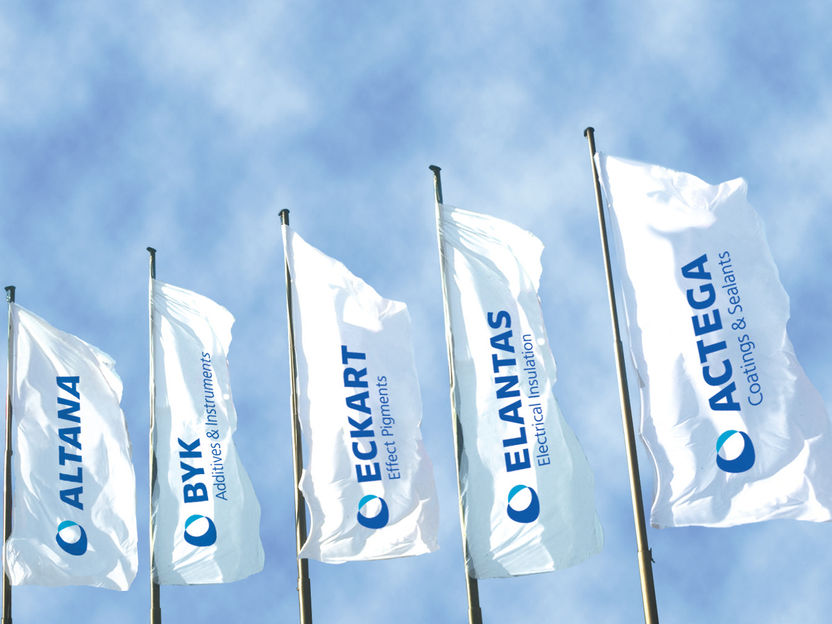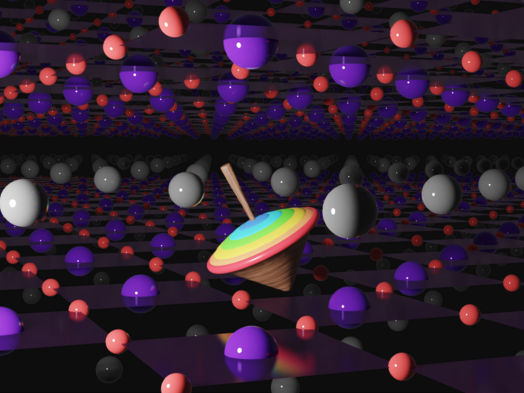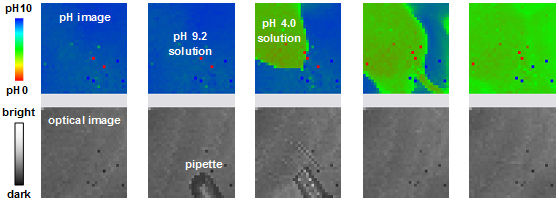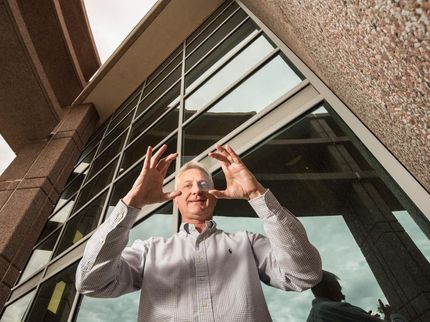Setting the gold standard
A team of University of Florida researchers has figured out how gold can be used in crystals grown by light to create nanoparticles, a discovery that has major implications for industry and cancer treatment and could improve the function of pharmaceuticals, medical equipment and solar panels.
Nanoparticles can be "grown" in crystal formations with special use of light, in a process called plasmon-driven synthesis. However, scientists have had limited control unless they used silver, but silver limits the uses for medical technology. The team is the first to successfully use gold, which works well within the human body, with this process.
"How does light actually play a role in the synthesis? [This knowledge] was not well developed," said David Wei, an associate professor of chemistry who led the research team. "Gold was the model system to demonstrate this."
Gold is highly desired for nanotechnology because it is malleable, does not react with oxygen and conducts heat well. Those properties make gold an ideal material for nanoparticles, especially those that will be placed in the body.
When polyvinylpyrrolidone, or PVP, a substance commonly found in pharmaceutical tablets, is used in the plasmon-driven synthesis, it enables scientists to better control the growth of crystals. In Wei's research, PVP surprised the team by showing its potential to relay light-generated "hot" electrons to a gold surface to grow the crystals.
The research describes the first plasmonic synthesis strategy that can make high-yield gold nanoprisms. Even more exciting, the team has demonstrated that visible-range and low-power light can be used in the synthesis. Combined with nanoparticles being used in solar photovoltaic devices, this method can even harness solar energy for chemical synthesis, to make nanomaterials or for general applications in chemistry.
Wei has spent the last decade working in nanotechnology. He is intrigued by its applications in photochemistry and biomedicine, especially in targeted drug delivery and photothermal therapeutics, which is crucial to cancer treatment. His team includes collaborators from Pacific Northwest National Laboratory, where he has worked as a visiting scholar, and Brookhaven National Laboratory. In addition, the project has provided an educational opportunity for chemistry students: one high school student (through UF's Student Science Training Program), two University scholars who also funded by the Howard Hughes Medical Institute, five graduate students and two postdocs.
Original publication
Yueming Zhai, Joseph S. DuChene, Yi-Chung Wang, Jingjing Qiu, Aaron C. Johnston-Peck, Bo You, Wenxiao Guo, Benedetto DiCiaccio, Kun Qian, Evan W. Zhao, Frances Ooi, Dehong Hu, Dong Su, Eric A. Stach, Zihua Zhu & Wei David Wei; "Polyvinylpyrrolidone-induced anisotropic growth of gold nanoprisms in plasmon-driven synthesis"; Nature Materials; 2016
Most read news
Original publication
Yueming Zhai, Joseph S. DuChene, Yi-Chung Wang, Jingjing Qiu, Aaron C. Johnston-Peck, Bo You, Wenxiao Guo, Benedetto DiCiaccio, Kun Qian, Evan W. Zhao, Frances Ooi, Dehong Hu, Dong Su, Eric A. Stach, Zihua Zhu & Wei David Wei; "Polyvinylpyrrolidone-induced anisotropic growth of gold nanoprisms in plasmon-driven synthesis"; Nature Materials; 2016
Organizations
Other news from the department science
These products might interest you

NANOPHOX CS by Sympatec
Particle size analysis in the nano range: Analyzing high concentrations with ease
Reliable results without time-consuming sample preparation

Eclipse by Wyatt Technology
FFF-MALS system for separation and characterization of macromolecules and nanoparticles
The latest and most innovative FFF system designed for highest usability, robustness and data quality

DynaPro Plate Reader III by Wyatt Technology
Screening of biopharmaceuticals and proteins with high-throughput dynamic light scattering (DLS)
Efficiently characterize your sample quality and stability from lead discovery to quality control

Get the chemical industry in your inbox
By submitting this form you agree that LUMITOS AG will send you the newsletter(s) selected above by email. Your data will not be passed on to third parties. Your data will be stored and processed in accordance with our data protection regulations. LUMITOS may contact you by email for the purpose of advertising or market and opinion surveys. You can revoke your consent at any time without giving reasons to LUMITOS AG, Ernst-Augustin-Str. 2, 12489 Berlin, Germany or by e-mail at revoke@lumitos.com with effect for the future. In addition, each email contains a link to unsubscribe from the corresponding newsletter.
Most read news
More news from our other portals
Last viewed contents
Bayer reduces size of Board of Management from seven to five members

ALTANA achieves sales of more than 3 billion euros for the first time in 2022 - Continued high investment in innovation and sustainability
Toxin detection as close as an inkjet printer

Study finds nickelate superconductors are intrinsically magnetic - Waves of magnetic excitation sweep through this exciting new material whether it’s in superconducting mode or not
Bidentate Chelates with Larger Spacers - Chelating Lewis acids prepared by double hydroalumination of dialkynylsilanes

Bioelectronics: Invention of the pH imaging microscope for applications including treatment of Alzheimer’s disease.

Improved lubrication without oil
AkzoNobel Applies for Patent on Small Scale Chlorine Production

Improving the lifetime of bioelectrodes for solar energy conversion
Category:Carbonic_anhydrase_inhibitors


























































